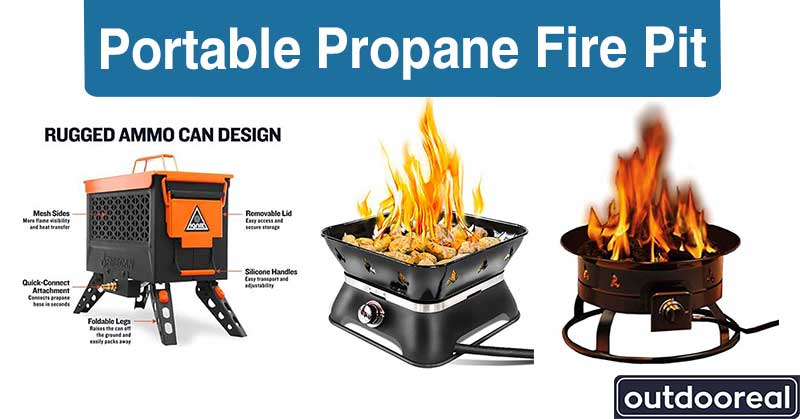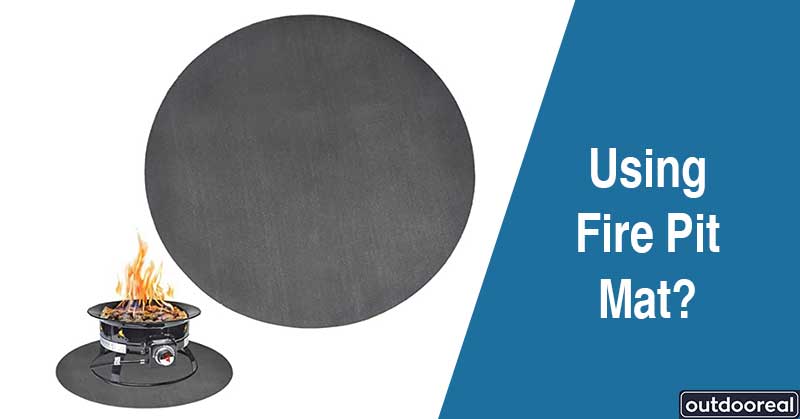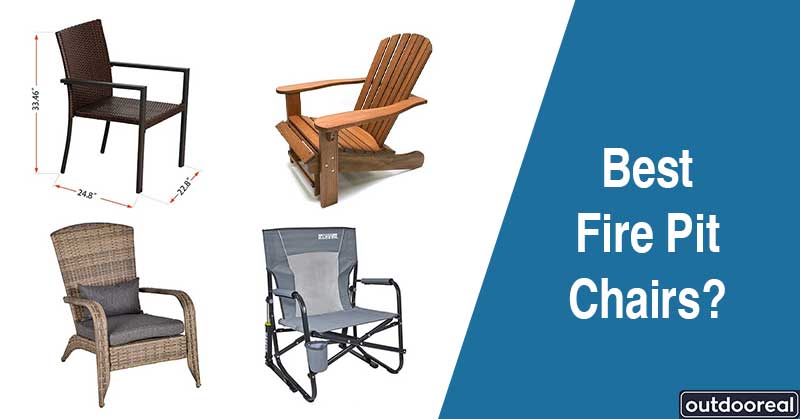Yes, you can use a patio heater under a roof, gazebo, canopy, or covered porch. However, the top or covering should be at least ten-twelve feet high to ensure safety. Also, remember that propane or gas fire pits produce some toxic gases and are not prescribed to use indoors. For placing the heater, ensure enough ventilation and a safe distance from any flammable structure.
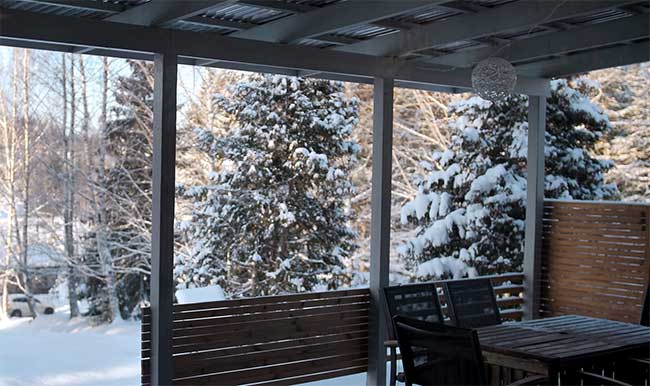
Are Patio Heaters Safe Under a Roof?
Patio heaters are indeed safer options to operate under a covered porch than using fire pits. However, different heaters work differently, and you must be concerned about the complex safety issues before enjoying warm evenings peacefully.
Here, we have discussed different types of patio heater safety issues:
Gas/ Propane Patio Heater:
Gas and propane patio heaters are designed for use outside and should not be used indoors. Use these patio heaters only in open outdoor spaces with appropriate ventilation. They emit poisonous gaseous substances such as carbon monoxide, which can be hazardous to your health in significant numbers. The ventilation of your patio is one of the most critical factors to consider. Gas or propane heaters should be avoided if the space is poorly ventilated. Contaminants harmful to your health can accumulate and quickly affect the younger and old ones.
Electric or Infrared Heater:
Infrared heaters are the best option for use under a covered porch. As they do not produce any poisonous substances, unlike gas fire pits, they are undoubtedly the safest choice for gazebos, canopies, covered porches, etc. Electric or infrared patio heaters can be placed under a roof or hung with the roof by maintaining a distance of two feet between the top and the heater.
Solid Fuel Heater:
It is strictly advised not to use any solid fuel heater under the roof or indoors. Reliable fuel heaters include anything substantial to burn and create a fire. This type of heater is another fire pit, which can cause serious fire threats and hazards if used under a covered porch or roof.
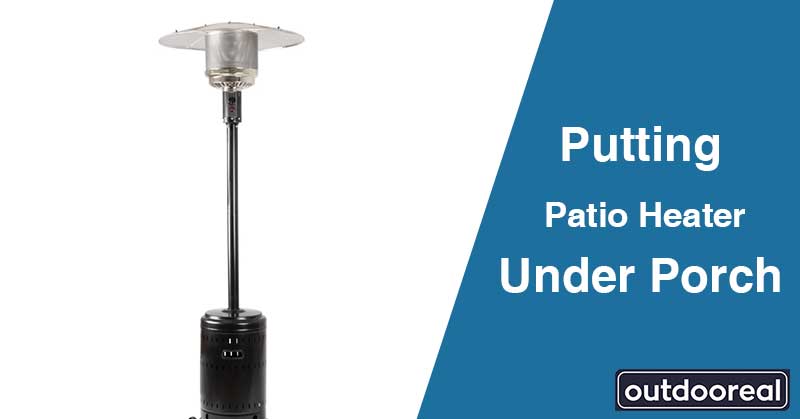
Is it Safe to Use a Patio Heater Under a Covered Patio or Porch?
Using a patio heater under a covered patio or porch is safe as long as you maintain the safety distances from flammable items and ensure proper ventilation. Unlike solid fuel heaters, propane or gas patio heater can be used under a covered patio. Keep at least a few feet of space around the heater to lessen the chance of a fire. To be safe, read the manufacturer’s directions. Place the propane heater or tank away from any wooden beams to avoid starting a fire. However, an electric patio heater can be used beneath a covered patio. They are also suitable for indoor use. Hanging heaters are frequently confused with ceiling-mounted heaters since they are both installed from the ceiling.
On the other hand, ceiling-mounted heaters are positioned close to the top, while hanging heaters are similar to a chandelier. Hanging heaters are usually waterproof and look like big lamps. Moreover, they are safe if you follow the instructions.
You may also like: Can you leave your patio heater in the rain?
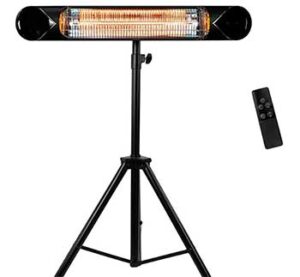
8 Safety Tips While Using Patio Heater Under a Covered Area
Just like fire pits, patio heaters need some safety precautions, and it is mandatory to maintain the safety concerns for your family members, friends, kids, or guests when using a heater. Some safety precautions and measurements needed for using patio heater;
1. Ensure proper ventilation
For gas heaters or even electric heaters, it is essential to ensure enough ventilation, so the place does not get filled with poisonous gases, such as carbon monoxide. This type of gas can cause serious health hazards.
2. Maintaining safety distance
While using a patio heater in a covered place, check if the ceiling is at least 10 feet high or not. Also, keep all the flammable items, such as wooden chairs, furniture, etc., 3-4 feet away from the heater.
Usually, the larger and more powerful the heater, the greater the clearance required. Avoid crowding your patio heater to ensure the safest and most comfortable experience. Consult the manufacturer’s instructions to find the exact information for your heater.
3. Use a stabilizing mat or base platform
The tabletop or standing heaters may get tipped over if the base is not smooth. This may cause fire hazards and severe accidents. Also, the heat can damage the lawn, table, or any surface you put on the patio heater.
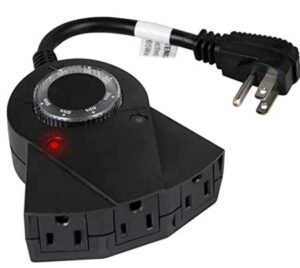
4. Checking power connections
For electric heaters, it is essential to unplug them when not in use and be careful never to touch the cables or the power cords with a wet hand.
5. Manufacturer’s instructions
The last and most vital rule is to check your manufacturer’s instructions; for example, if the heater is made for outdoor, indoor, usage level, BTU, etc. The item description or manual should highlight all the steps you need to follow. Using an outdoor designated heater inside or under a covered porch is highly dangerous.
6. Keep Clean
Always keep the heater clean and tidy while not in use. People often tend to have snacks or food with guests, and the heater may get dirty, so ensure to wipe and clean it properly.
7. Keeping away from water
Though some patio heaters are waterproof and can be kept in the rain; however, most of the patio heaters remain prone to water. If left in the shower or open outside for a long time, it may cause the heater to rust or malfunction. Always the manufacturer’s instructions and store the portable patio heaters when not in use.
8. Kid and pet safety
The little ones are always vulnerable to hazards that are challenging to control. For example, pets tend to find and sit near the warmer place, and you must prevent your furry friends from sitting beside the heating source. Also, keep children away from the heater, as directly touching the heater may cause severe burns.
You may also like these articles:
Can a Patio Heater be Used Indoors?
Final Verdict
While you choose the perfect patio heater for your home, it is essential to fix where you want to use it. If you plan to use the patio heater on a covered porch; for example, a gazebo, pergola, canopy, or any structure with a roof, it’s better to go for electric and infrared type. However, the heat amount is relatively low for electric ones than the gas or propane-powered heaters. Only use gas-powered patio heaters when there’s plenty of ventilation, and never use any wood-burning or solid-fuel-burning heaters under a covered porch.



